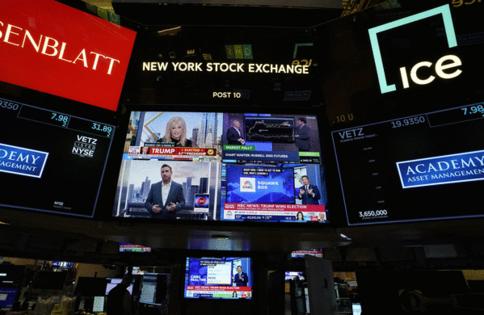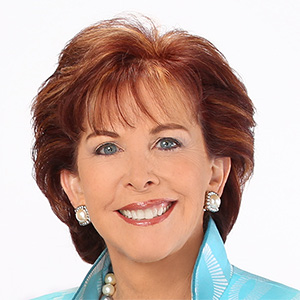Jonathan Levin: Trump is making the 60/40 portfolio great again
Published in Business News
The post-election stock market is already giving investors a wild ride. Big individual stock selloffs, massive rallies, and a dizzying array of market narratives built on Wall Street’s best attempts to read President-elect Donald Trump’s mind. All told, the S&P 500 Index is up almost 4% since Election Day, but the numbers don’t do justice to the tenuous feeling around all of it. That combination of policy uncertainty with some of the highest valuations since 2021 may spur renewed interest in risk-management strategies. Fortunately, there’s an easy one at everyone’s disposal.
Before attempting to Trump-proof any portfolio, investors should ask themselves a couple of key questions. First, can you keep your political biases in check? If not, you probably need to adjust your risk exposure. With Trump, you either love the guy or hate him, and investors are at their best when they’re at their most dispassionate. I worry that a toxic mix of politics and market volatility might induce people to do something foolish like sell at market bottoms. Or go all-in at tops. One of the most important aspects of a sound investing strategy is finding a way to sleep at night so you can ultimately stay invested.
Second, do you have the skill sets to see around corners in a Trump-dominated market? Even in the pre-Trump era, many investors would have told you that political soothsaying wasn’t their core competency. But Trump is a uniquely unpredictable politician who takes office with a potentially paradigm-shattering agenda and a lame duck’s temerity. Is his talk of 10%-20% universal tariffs; 60% duties on China; and mass deportations a negotiating tactic? An opening salvo? Or is he reckless and unbridled enough to really carry them out at scale against the backdrop of already-elevated inflation and high interest rates? And to what extent will his cabinet, members of Congress, the judicial branch and the financial markets manage to check any excesses? Some people might think they have a legitimate “edge” in answering those questions, but I haven’t encountered many I’d bet on.
If the elections have you jumpy and disoriented, the easiest solution might be a version of the classic 60/40 portfolio of stocks and bonds. Traditional stock-bond portfolios have gotten a bad wrap since the punishing dual-asset-class selloff of 2022, but those were very different times. Back then, bonds offered very little income to cushion the blow and they were essentially moving in lockstep with equities. Today, stock-bond correlations are turning negative again.
And yields are close to their highest since the financial crisis. Bonds now pay investors much more, even as stock “yields” have gotten stingier and stingier. High valuations are never reason in and of themselves to expect a correction, but they certainly have a habit of making pullbacks more painful.
In a recent analysis by Pacific Investment Management Co.’s Erin Browne and Emmanuel Sharef, the portfolio managers showed that 60/40 portfolios rarely deliver significantly negative monthly returns in periods of negative stock-bond correlation. The large 60/40 “left tails” are more common in periods of positive correlation.
Another popular critique of the 60/40 portfolio is that it constitutes “diworsification.” In the long run, the diversified basket of US large-cap stocks has reliably gone up, crushing the return on bonds, so why not just sit in stocks, especially if you’re young enough to wait out periods of short-term volatility? That’s true enough, and explains why some investors gave up on bonds even before the COVID-19 pandemic. Zero interest rate policy from 2008-2015 — and then again from 2020-2022 — turned bonds into extremely low-reward assets and made equities look irresistible. Since 2007, the S&P 500 has delivered 461% returns (at the time of writing), compared to just 59% returns for the Bloomberg US Aggregate Index, which includes Treasuries, investment-grade corporates and agency mortgage-backed securities.
There are good reasons to think that the disparity in stock-bond returns won’t be as stark in the period ahead. A jarring report from Goldman Sachs Group Inc. strategists including David Kostin posited that the S&P 500 may post an annualized total return of just 3% over the next decade, with a 72% chance that the index will perform worse than Treasury securities. The underwhelming forecast resulted primarily from exceedingly high starting valuations and market concentration. That seems like an extreme prediction. I’m still optimistic about US equities in the long run, but it’s clear that the starting point matters greatly for any investment, and stocks are expensive.
To be clear, bonds are far from a perfect hedge. They’d be powerless against a bout of stagflation, and they limit your total upside if 2025 ends up being one of the better market years of the Trump administration. It’s also counterintuitive to buy more of them, given that one of the biggest economic risks from Trump 2.0 is resurgent inflation. But that risk is probably better priced into fixed-income securities than equities, and — as Pimco points out — an allocation to inflation-linked bonds could provide one additional source of protection.
What’s more, bonds are no more flawed a hedge than the other options at our disposal, including some that are too volatile or complex for many investors. What about a “protective put” strategy (using out-of-the-money options to insure against large drawdowns while maintaining broad equity exposure)? That’s expensive in the long run and works best in abrupt crashes like 1987’s Black Monday, not slow-burning bear markets like the dot-com bust. What about gold and Bitcoin? Sure, but some would argue they’re even frothier than large cap stocks.
I’ve even considered trying to build a custom index that excludes all the Trump-exposed trades, but the tentacles of the proposed agenda seem to reach into every sector of the index. You’d need to exclude every company dependent on imported products; every company with widespread exports; pharmaceutical companies that profit from vaccines; green economy firms — the list goes on.
If the policy outlook causes you to dash for bonds, that approach can be opportunistic. It’s conceivable that the new Trump administration will attempt to deliver on its more anxiety-provoking economic proposals out of the gate in 2025. That would give investors some concrete details to work with, rather than trying to divine Trump’s thought process. In a best-case scenario, patient investors might even stumble into stock-buying opportunities at more accessible valuations late next year. Worst case, they’ll be underexposed to a rally but have avoided a mountain of anxiety. Personally, that seems like a decent trade-off.
©2024 Bloomberg L.P. Visit bloomberg.com/opinion. Distributed by Tribune Content Agency, LLC.












Comments